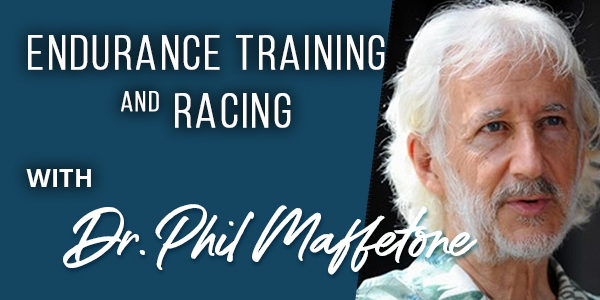
A great gait can help reduce physical stress, including injuries, improve speed and endurance, and reduce weight and body fat. Why? Because it helps the brain too.
Among the most important features in all sports is an effective gait, something that’s been studied for centuries. Pose and Chi techniques have helped people significantly, and are among the most popular running methods these days. Ultimately, it’s the brain that creates our best gait..
While some basic principles apply to proper running form, the truth is there is no single “gait” that works for every individual, nor in every circumstance such as for different distances, surfaces and terrains. As a rule, most runners do well avoiding landing on the heels, and the rest often follows: knees slightly bent, body slightly forward, shoulders back and chest open.
Not surprisingly, the best gait for most active people also corresponds to level of aerobic development, and most people find their best stride is also related to the aerobic zone determined by the MAF 180 Formula. In short, people find their best gait is when they are running with the least effort, burning fat for fuel — and having fun doing it!
Movement is a key feature of natural health, and performing it effectively can help all aspects of health and fitness. Gait is moving posture and we use it daily both walking and running. Different exercise intensities can affect our gait various ways because they influence the brain differently. These actions are mediated through the brain’s motor cortex, which controls muscle contraction and relaxation.
Gait reflects our physical, biochemical and mental-emotional persona. The wide spectrum of brain states, from being bubbly happy to acute and chronic pathology, influence gait.
Controlling exercise intensity influences gait greatly. An irregular gait usually reflects undue stress; lower stress improves it. Higher intensity efforts fatigue muscles quickly, impairing function and gait. An example of this is seen in a runner finishing a marathon, where the smooth running earlier in the race has turned to an irregular, stressed gait at the end.
It was by reading the various gaits of clients through ranges of heart rates that I developed the MAF 180 Formula, an optimal training heart rate for improving the aerobic system. In short, I was able to determine the heart rates associated with better gait. Along with clinical examinations, this led to obtaining a personalized MAF HR for each individual.
But I wanted other people to accomplish the same thing without going through such a rigorous evaluation. This led to the MAF 180 Formula, and subsequent refinements.
A period of exclusive low-stress training, e.g., three to six months, often called an aerobic base, is a key foundation of the MAF Method (maximum aerobic function). This promotes development of slow-twitch or aerobic muscle fibers, results in better fat-burning, structural support, circulation and immunity, and ultimately, moving faster at the same MAF HR; and a better gait.
A slower gait may feel rather odd because you’re not accustomed to a pace that uses out-of-shape slow-twitch muscle fibers. For some it can even lead to a temporary mild soreness, considering you’re training those muscles.
- Higher intensity workouts trigger an alarm reaction, the first stage of excess stress, as the brain senses potential danger. Muscle fatigue follows, impairing gait. Fat-burning decreases with increased use of glycogen, promotion of inflammation and impaired cognition, including memory. The need for recovery increases. The HPA axis (hypothalamic-pituitary-adrenal) is stimulated, including increased sympathetic activity and increased cortisol. Opioid release in the brain, the runner’s high, could increase addiction to hard training.
- Lower intensity training is less stressful, enlisting more slow-twitch aerobic fibers to improve muscle balance and gait. A more moderate HPA axis stimulation tampers the physical, biochemical and mental-emotional stress, lowering fatigue and reducing recovery time. It can also improve cognitive function, increase fat-burning, spare glycogen stores. Improve health is reflected in a better gait.
Exercise training means teaching our neuromuscular system to work in efficient ways. But if we skip some stages we don’t fully develop aerobic muscle fibers. Because lower intensities can burn more fat, exercise also trains the metabolism, which has profound effects on the brain. Lower intensity exercise also improves motor control.
Self-pacing is a technique to help the brain, a subconscious natural effort that can also improve exercise enjoyment and therefore increase consistency. While the MAF 180 Formula gives you a single MAF HR, let yourself drift within that 10-beat zone as a way to self-pace. It’s MAF fartlek training. Also, consider aerobic or downhill intervals to improve turnover or leg speed.
The MAF 180 gait, of course, is your exercise gait at or within 10 beats below your MAF HR. Once you develop it well, and you can work out faster at the same HR. You then have the option to add higher intensity training and/or racing without undue stress, better recovery, and without sacrificing health.
References
Reiman EM, et al. Neuroanatomical correlates of externally and internally generated human emotion. Am J Psychiatry. 1997;154(7). doi:10.1176/ajp.154.7.918
Maffetone PB, Laursen PB. Decision-making in health and fitness. Front Public Health. 2019;7:6. doi: 10.3389/fpubh.2019.00006.
Maffetone PB, Laursen PB. Athletes: Fit but unhealthy? Sports Med Open. 2016;2:24. doi: 10.1186/s40798-016-0048-x
Schmitt A, et al. Modulation of Distinct Intrinsic Resting State Brain Networks by Acute Exercise Bouts of Differing Intensity. Brain Plast. 2019;5(1). doi: 10.3233/BPL-190081.








